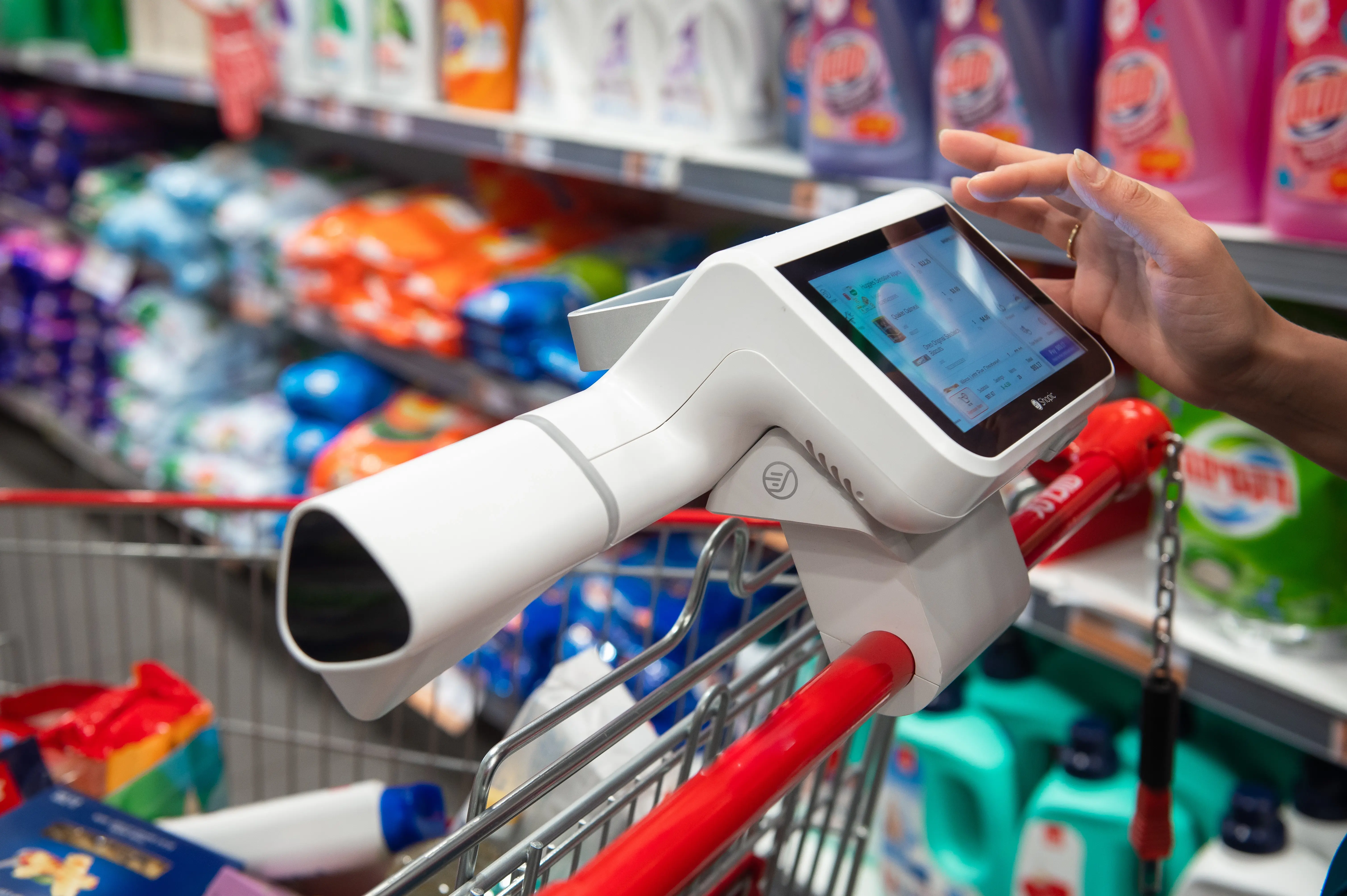
Over the past few years, we've seen significant technological leaps in smart carts. To compete with e-commerce, retailers have integrated online features into the in-store shopping experience. However, some smart carts are smarter than others. As you move from traditional carts to smart carts, here are some things to look for before investing in the technology.
Your smart cart should work within the store layout. There are actually two elements to this. First, the smart cart should not interrupt the flow of the store or inconvenience customers. It should be narrow enough to easily move through the aisles and go around or pass other carts.
Furthermore, many stores designed their layout around carts that either are stored outdoors or are indoors but nest so they take up less space. Most smart carts can't go outside and are unable to nest. This forces supermarkets to use valuable retail square footage for smart carts that are not in use. Looks for a smart cart that either nests or can be stored outdoors, limiting the disruption to the store layout.
The smart cart should be easy to use for customers of all ages. Its design should make it easy for customers to add products, view the items in their cart, and see the cost of their cart in real-time.
Customers shouldn’t have to struggle when they want to remove an item or wait for help when an item doesn't scan correctly. Large buttons and clear on-screen instructions are imperative.
Adding and removing items from the cart should be as easy in a smart cart as it was in a traditional shopping cart. These activities sit at the core of the in-store shopping experience. For smart carts to be of value to the customer, they must not alter their shopping process.
Adding items to the cart should be as simple as placing them inside the basket without having to consider how they hold the items when they are added. Similarly, removing those items should only require reaching in and taking the item out. It shouldn’t involve a process that also requires the customer to scan the list of items in the cart and delete the item.
The smart cart should always improve the customer experience. This could mean allowing users to log in and get recommendations based on their previous shopping habits or providing recommendations based on items already in the cart. Carts should also offer location-based promotions and real-time discounts as the customer walks through the aisles.
Checkout lines are one of the biggest pain points facing shoppers. Smart carts should eliminate the need to wait in line through a seamless checkout experience. Following checkout, customers should be able to push their carts with their groceries into the parking lot.
Smart carts should be capable of capturing customer behavioral data. This data can be used to further enhance the customer experience through better recommendations and promotions.
Retailers can use the data on both the individual level and in the aggregate, tailoring their offerings and store layout in a way that improves sales.
Smart carts should have wide coverage of payment options. Stores can decide whether to allow all users to pay on the device or only allow registered users to do so. Carts should be capable of accepting credit cards, mobile payments, coupons, and store loyalty points.
Retail media is one of the fastest-growing income streams in today's retail establishments. Smart cart screens should be capable of displaying ads, promotions, and other content as customers walk through the aisles. In addition to the revenue generated through the retail ads, retailers can increase sales through the promoted products.
Introducing smart carts to your store provides shoppers with a personalized, convenient shopping experience while helping improve sales through highly targeted promotions. Look for a smart cart solution that addresses these issues to maximize the value of the technology.


